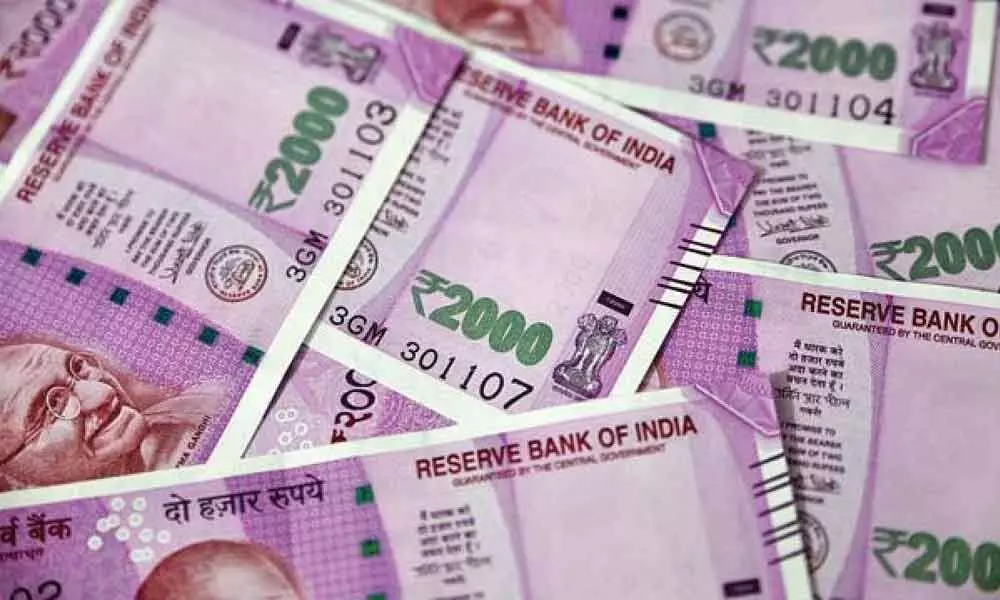Clamour for stimulus grows as GDP to shrink

Clamour for stimulus grows as GDP to shrink
It is estimated that India's economy likely to contract between 17-30% in Q1
The economic impact of Covid-19 on India's GDP is expected to be anywhere in between 17 per cent and 30 per cent during Q1FY21.
According to leading economists, the measures to curb the pandemic heavily dented manufacturing, services and other sectors apart from agriculture during the quarter. The country had observed mobility restrictions as mandated under the lockdown measures for the better part of the first quarter of FY21. It was only on June 1 that partial unlock measures were implemented.
However, a contraction at this scale has not been witnessed since the quarterly series began in the late 1990s.
In financial parlance, a GDP contraction not only indicates the economy's movement towards a recession, but also underlines the reduction in purchasing power along with lower taxes for the government, higher defaults on debt and falling Capex spends.
"We estimate a contraction of 17 per cent in Q1FY21 GDP as a direct result of lockdown, supply side constraints, and low to nil activity in non-essential manufacturing and services. While a robust growth in agriculture during this period is going to provide some cushion to the GDP growth, it will be insufficient to substitute the downfall arising out of the contraction caused in the manufacturing and services sector," said Sunil Kumar Sinha, Principal Economist, India Ratings & Research. "Local or regional or weekend lockdowns and health related concerns of the general public are continuing to act as hindrances towards normalcy of economic activity and the eventual sustainability of growth. Given the evolving situation, there is an urgent need to prop-up demand in the economy which had been languishing from even before the Covid-19 related lockdown, otherwise supply side measures announced so far will soon run into difficulty due to lack of demand," Sinha added. India's FY20 GDP had declined to 4.2 per cent from 6.1 per cent in FY19, the slowest in the last 11 years.
On a sequential basis, the quarterly growth rate has progressively declined from 5.2 per cent in Q1 of 2019-20 to 4.4 per cent in Q2, 4.1 per cent in Q3 and 3.1 per cent in the last quarter of 2019-20. "With domestic economy severely disrupted due to the nationwide lockdown, the contraction in Q1 can be as high as 30 per cent," said Sankar Chakraborti, Group CEO, Acuite Ratings & Research.
"However, it's not a very conducive environment to forecast economic output. There are far too many uncertainties that will continue to play out in the next few months. A second outbreak may make it far worse, while on the other hand, positive government actions may make it better in the short term. It may just be fair to say that we will see one of the worst years in this century with contraction not less than 10 per cent. A serious economic rev ival should commence from next year," Chakraborti added. According to Madhavi Arora, Lead Economist, FX and Rates, Edelweiss Securities: "We expect 1Q GDP to contract 18.1 per cent YoY on account of extended lockdown in April-May, weak domestic demand and supply disruptions emanating from both domestic and global front. Core gross value added (GVA) would likely be extremely sluggish, depicting private sector's fragile state. As the economy exited the lockdown, domestic activity has gradually firmed up, but it is coming off a depressed base, and looks partly pent up and appears to have stabilised now after having seen a V-shaped rebound."
On its part, ICRA pegged the contraction in Indian GDP and the GVA at basic prices in year-on-year (YoY) terms in Q1 FY2021 at around 25 per cent each. "In addition to lower raw material prices, pared down employee costs and other cost-cutting measures appear to have protected the margins of various listed companies as compared to our earlier expectations of the impact of the lockdown on profitability," said Aditi Nayar, Principal Economist, ICRA.
"However, the cost-cutting measures would depress revenues and margins of other producers, including the MSMEs, for many of which data may be available with a lag at best, and may not, therefore, get captured in the initial estimates of the CSO for Q1FY21. Overall, we expect the manufacturing GVA to contract by 40-45 per cent in Q1FY21," Nayar added.
The National Statistical Office (NSO) is slated to release the first quarter Real GDP or Gross Domestic Product (GDP) at Constant (2011-12) Prices for the year 2020-21 on Monday.
















